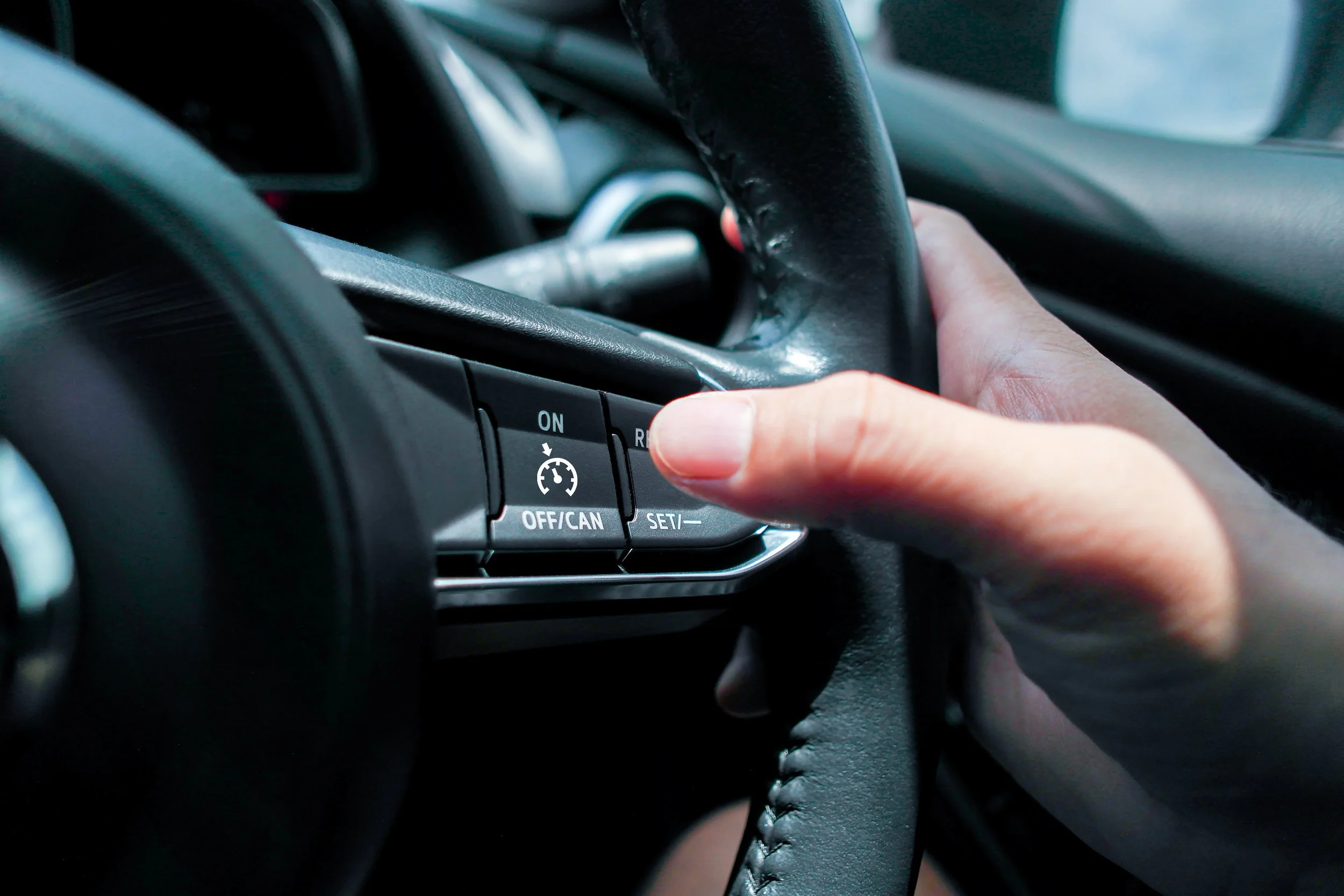Areas of Expertise
Evaluation
Evaluation should be an inherent part of any program. The Dunlap approach includes problem identification, objective setting, measure development, data collection, assessment of outcomes, and feedback for project improvement. Our evaluations are rigorous, independent, and fully supportive of improved program performance.
Ongoing Projects
Telematics and Distracted Driving
A project that looks to explore the reliability of telematic technologies to document and monitor distracted driving behaviors for younger and middle-aged drivers. The team will analyze driving data from traditional DAS and telematics technology for over 125 participants.
Older Novice Driver Naturalistic Study
A project that involves a large-scale naturalistic driving study. The study investigates the evolution of younger and older novice driver performance and behavior during the first 12 months of independent (unsupervised) driving.
Level 2 Vehicle Automation Naturalistic Driving Study
A project utilizing an advanced data acquisition system to collect a broad array of data types including multichannel video, driver behavior, vehicle kinematics, GPS trace, and more for 180 participants. Machine learning/computer vision data processing techniques and manual coding techniques will be utilized to analyze thousands of hours of video and sensor data collected. The ultimate objective is to determine how drivers use L2 systems during natural on-road driving, and the extent to which such systems affect safety behaviors.
Past Projects
-
Subcontractor to Battelle for a project that examined the impacts of a computer-based speed education program on driver opinions and actual speeding behaviors. The project involved the development and administration of a program to a sample of drivers cited for speeding who had their opinions and driving behaviors measured before and after training. Drivers had tracking devices installed in their vehicles to monitor actual speeding before and after training.
-
A project that developed a best-practices guide on effective techniques for increasing seat belt use in rural areas. Researchers identified innovative approaches and effective strategies developed and deployed in rural communities such as law enforcement activities, positive incentive programs, public-private partnerships, and youth-driven efforts. NHTSA disseminated the guide to help State and local agency efforts to increase seat belt use in rural communities.
-
A study that evaluated the most recent reports from State Departments of Transportation and US territories based on funded traffic records projects. These projects related to crashes, citations, vehicle & driver monitoring, roadway status, and injuries. This evaluation included adding metadata tags in MaxQDA, a PDF/DOCX tagging software. These metatags were assigned to track the project name, ID, core systems, interfaces, funding sources, funding amounts, stakeholders & grantees, outcomes & performance measures, and additional data that was determined to be relevant.
-
A study that assessed situational factors and outcomes associated with pedestrian hit and run cases. These files were sourced from police reports that had been made available for research by the State of Florida. Some situational factors and outcomes that were evaluated were the presence or absence of a witness, if there was a camera at the incident site, whether the driver was potentially unaware of the incident, if witness, driver, passenger, or victim statements were included, whether the driver was identified by law enforcement, and more.
-
A project that involved providing community technical support and guide development based on focus groups with communities discussing their experience implementing low-cost countermeasures to address pressing pedestrian safety issues in targeted areas.
-
A project that aimed to: 1) Identify, obtain, and analyze secondary and/or archival data relevant for answering the research questions about GDL legislation proposed in the fifty (50) states; 2) Conduct in-depth case studies of nine (9) or fewer individual GDL bills to provide additional information about the factors associated with the outcomes of recent GDL legislation.
-
A project that had the objective “to develop, design, and determine the potential challenges for conducting a hypothetical naturalistic driving study with younger (age 15.5 – 16.5) and older (age 18 – 20) novice drivers in the first six months of independent driving.” The study involved an extensive literature review and design of all protocols necessary to execute a naturalistic driving study aimed at determining what factors are associated with increased risk for certain novice drivers.
-
A study of drivers between the ages of 60 and 89 who had a valid driver’s license and drive at least 3 times per week. The purpose of this research was to examine the conditions under which drivers in various age groups choose to drive and how general driving habits vary with age. This was a naturalistic driving study with video and tracking of drivers over a 30-day period. Drivers also completed a PC-based clinical battery and driving evaluation conducted by a certified driving rehabilitation specialist.
-
A study that documented differences in older adults’ driving performance while they drive to familiar destinations, unfamiliar destinations using paper directions, and unfamiliar destinations using an electronic navigation system (ENS). The project also explored the effects of familiarity using an ENS on driving performance. Based on the results of Study 1, ENS training for older drivers was developed and evaluated as part of Study 2.
-
A study that examined the safety benefits of license renewal procedures aimed at older drivers. The study included an extensive review of the literature relating to physical and mental decrements experienced by older drivers and how licensing procedures may address these problems. Contacts were made with representatives from all 50 States and the District of Columbia to review their current license renewal procedures. Crash data were examined to determine if licensing procedures had any effect on senior driver crash rates. Focus groups were held with older drivers and driver licensing staff to gather opinions about the licensing process.
-
A study that collected data in multiple States relating to older driver compliance with license restrictions in the State. Interviews and other data collection activities took place to determine whether older drivers were adhering to the restrictions placed on their driving privileges and how the restrictions impacted their lives.
-
A project to characterize ambulance driver training across the United States. The study was interested in learning if and how agencies providing emergency medical services train and regulate drivers of Type I, II, and III ambulances. The study documented the types of driver training offered, when this training is required, how driving incidents impact driving privileges, initial qualification standards, and other related topics.
-
As a subcontractor to Battelle, a project utilizing SHRP2 data to explore factors related to part-time seat belt use by drivers. This study involved staff members reviewing OBD-II and video data for thousands of drives in which drivers had a seat belt status change. Several environmental and behavioral factors were identified as being related to a driver’s decision to wear, or not wear, a seat belt.
-
A study that evaluated a hazard perception training program’s impact on young driver safety. This study involved giving a large number of newly-licensed young drivers in California the training and tracking their driving records for a year to see if the training impacts crashes and/or traffic violation rates relative to an equivalent comparison group. The follow-up study examined crash and violation data.
-
A study that involved a large-scale evaluation of Washington’s Target Zero Teams program. The study included the development and implementation of research protocols and tools for assessing awareness of the program and the program’s impact on crash rates.
Field Evaluation of Trauma Nurses Talk Tough – A study that evaluated the impact of a seat belt education class on recidivism and violation rates. This study involved putting seat belt violators through the Trauma Nurses Talk Tough program and evaluating its impact on violation and crash rates, as well as attitudes toward seat belt use.
-
A study that evaluated the effectiveness of a nighttime seat belt enforcement project in Washington by examining FARS data for belted an unbelted occupants by day and night. The study also included observations of seat belt use before and after the program, determined awareness of the program via a large-scale self-report survey at driver licensing offices, and examined driver and criminal records to determine how drivers who do not wear seat belts differ from those who wear seat belts.
-
A case study of the West Virginia Lifesavers seat belt program. The study included crash analyses and an analysis of a large-scale survey of all police officers in the State.
-
A study that tested the effectiveness of road signs for affecting seat belt use in New Jersey and Colorado. The study examined whether road signs alone can affect driver behavior, or if other components (e.g., enforcement) are needed to alter driver behavior.
-
An effort that provided evaluation support to Kansas and Missouri as they implemented high visibility enforcement programs aimed at increasing seat belt use in rural areas of the States.
-
A study that evaluated the effects of media and enforcement blitzes conducted in four States. The study analyzed data from thousands of self-report surveys, gathered information from focus groups, analyzed citation data, and summarized State reports about the programs.
-
A study that conducted a field test of an ISA that uses a force-feedback accelerator to control speeding behaviors of young drivers. The study used speed mapping and driver tracking to assess the effectiveness of the ISA for reducing speeding.
-
A study that investigated the potential effectiveness of In-Vehicle Driver Monitoring (IVDM) systems for changing driver behaviors.
-
A study that conducted an extensive review of driver education practices in the United States and around the world. The study involved an extensive literature review of driver education practices and their effectiveness and contacts with States regarding their current practices. The efforts also involved coordinating a panel of driver education experts that made recommendations for the future of driver education in the United States.
-
n evaluation of legacy Safe Routes to School programs and changes in pedestrian involved crashes. The study involved identifying and contacting program directors in order to determine if the program qualified for inclusion in study and analyzing crash data for selected sites to examine any changes in rates of crashes after the implementation of the Safe Routes to School programs.




